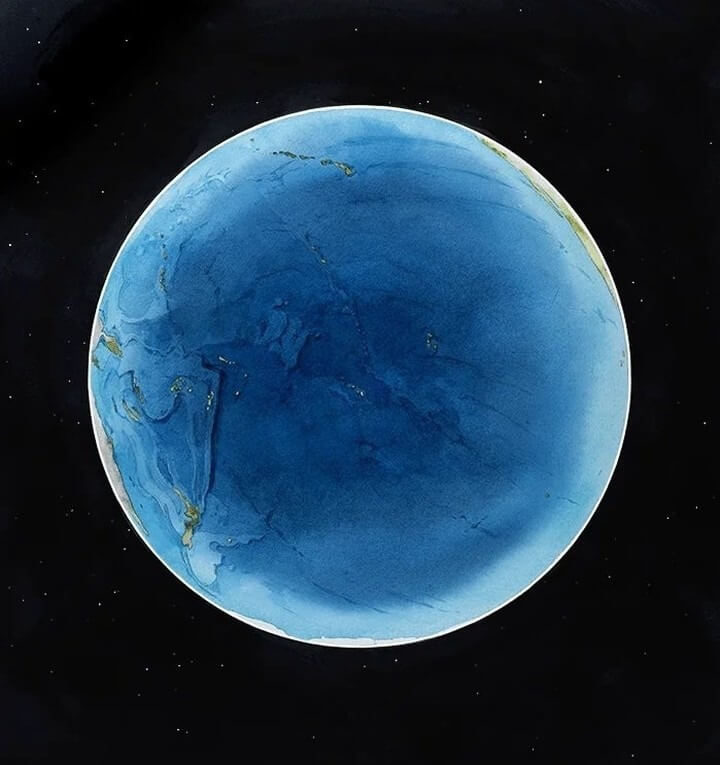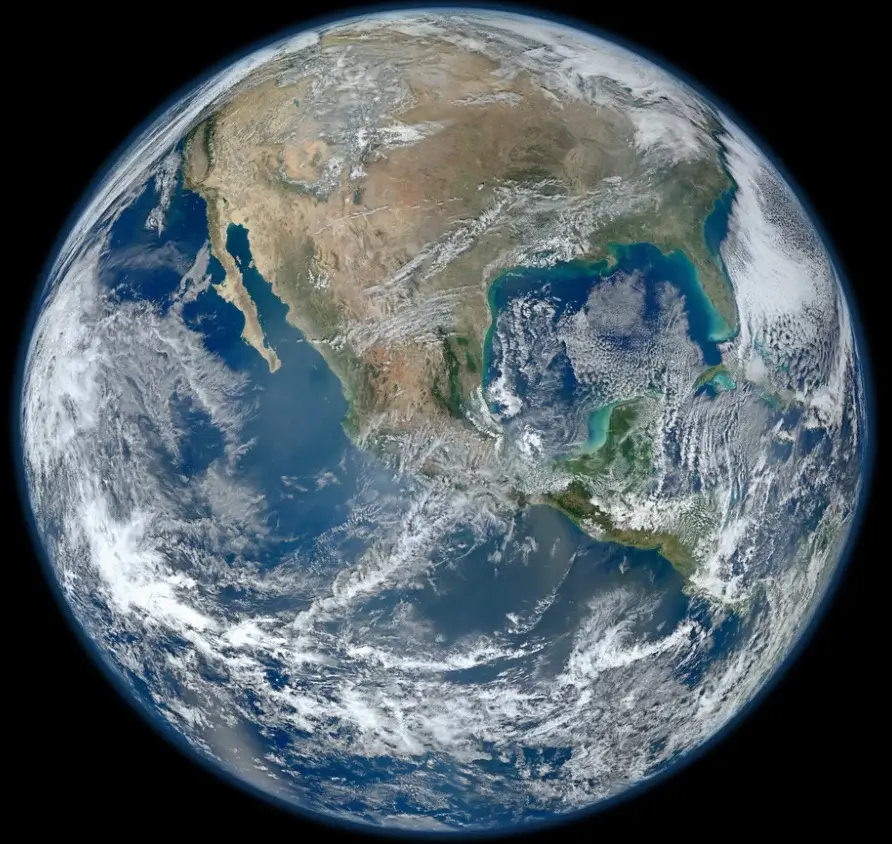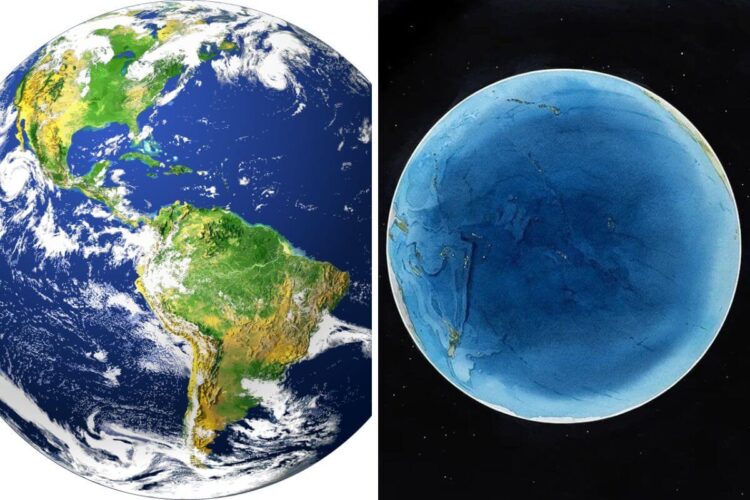People are amazed by this picture of Earth as it is nothing like they ever seen before. It actually looks like a different planet
Gazing at Earth from space, it’s easy to be struck by the overwhelming dominance of blue. Vast oceans stretch across the globe, their shimmering expanse dwarfing the scattered patches of brown and green that represent our continents.
This seemingly endless sea is no illusion; Earth truly is a watery world, with a staggering 71% of its surface area covered by oceans.
This picture is viewed at 15-145 degree angle. You are looking at the exact center of Pacific Ocean.

And this is how you are used to seeing Earth from space

Still a lot of water sure, but from this familiar angle you also see a lot of the land, even though most of Earth is water and we all know it.
But what does it mean for a planet to be “mostly water”? While the image of Earth from space paints a picture of watery abundance, the reality is more nuanced. Let’s dive deeper into this fascinating aspect of our planet.
Liquid Lifeblood:
Water is not just visually dominant, it’s crucial for life. Its unique properties, from its ability to dissolve a vast array of molecules to its high heat capacity, make it essential for biological processes.
Oceans act as vast reservoirs of this precious resource, regulating Earth’s climate, influencing weather patterns, and generating oxygen through phytoplankton.
They also harbor a mind-boggling diversity of life, from microscopic plankton to majestic whales, forming an intricate web of interconnected ecosystems.
Some of the reactions online for the first photo are hilarious with people saying things like:
” I was sure I am looking at a different planet! “
and
” No way this is Earth! “
Space has a way to always keep up amazed even if we already know something, simply looking at it from a different angle can change the whole picture.








